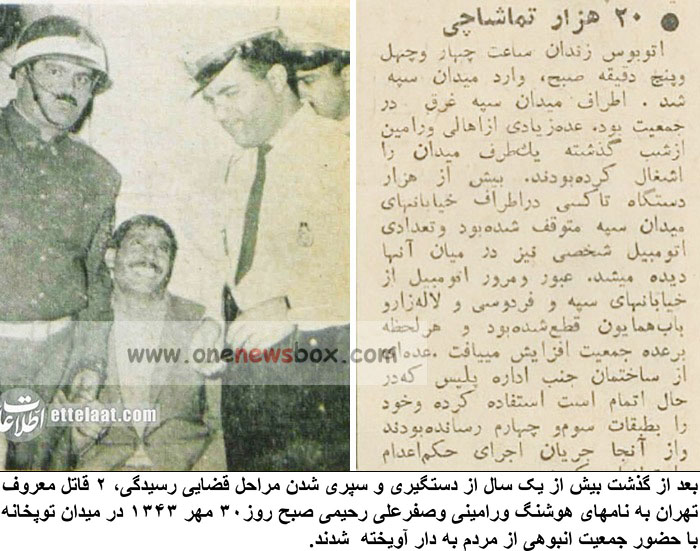On the morning of October 30, 1964 (Mehr 8, 1343 in the Iranian calendar), in the heart of Tehran, Topkhaneh Square, an event took place that would forever mark the trajectory of Iran’s criminal justice system. The public execution of Hoshang Varamini and Safar Ali Rahimi, two infamous criminals, stood as a symbolic moment in Iranian history, triggering significant social debates and influencing the country’s stance on public executions for years to come.
The incident stirred emotions across Iran, raising fundamental questions about the morality, impact, and purpose of public executions in modern societies. The event, covered by Ettela’at newspaper, provided the public with a detailed account of the events leading to the execution, the spectacle itself, and its subsequent social and political ramifications. This report, and the subsequent discourse surrounding it, shaped not only the judicial practices in Iran but also how the government addressed public sentiments around crime and punishment.
The Crimes of Hoshang Varamini and Safar Ali Rahimi
Hoshang Varamini and Safar Ali Rahimi were convicted murderers whose crimes had deeply shocked and outraged Iranian society. Their names became synonymous with heinous acts of violence, and their capture and trial were extensively covered by the media of the time.
Varamini and Rahimi were not ordinary criminals; they were notorious figures in the underworld of Tehran, and their crimes represented a culmination of violent acts that terrorized the capital city. The two men were responsible for a series of brutal murders and other violent crimes. The court proceedings revealed the extent of their criminal activities, which included armed robbery, assault, and repeated acts of homicide, and their deeds had led to a state of heightened fear and insecurity among Tehran’s residents.

